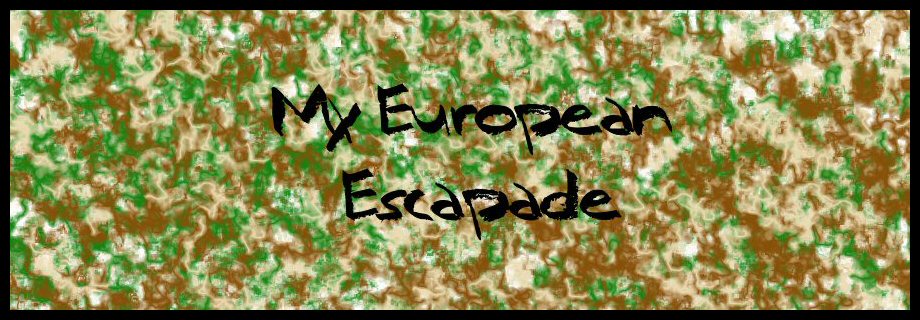Tuesday, August 10, 2010
Krakow: Day 1
Immediately upon arriving in Krakow, our first order of business was to buy tickets to Berlin, since we couldn't buy Polish train tickets in Czech Republic without paying a steep price. We went to the ticket office to find that the only train leaving Wedbesday was from 7 AM and arrives at 7 PM. Besides wasting a whole day, we would also have to pay $100, which is not my idea of a budget travel. We decided to wait for a while and check other options like a bus or something before committing ourselves to such terrible travel arrangements. Luckily, there were a lot of bus ticket offices around the train station, and we were able to price out the busses and they were almost as expensive as trains but better times. In the end we just decided to go to the hostel rather than make any decisions.
The hostel was only a 15 minute walk from the train station. Our walk there made me realize that Krakow is going to be a lot smaller than it looks. This is good for many reasons. First, we have 3 days here, second there is a lot to see but it's all close together. This means we can see a lot of things without having to rush around from place to place since we have more time to sightsee. Perfect. Check-in at the hostel was smooth. We paid, bought our tickets to Auschwitz, showered, and headed out to see Krakow and eat lunch.
Krakow's main square is beautiful. Krakow has many churches and is very Catholic. We began our sightseeing with a quick stop to the train station to buy our tickets (which our hostel clerk found for cheaper, but not as cheap as we hoped) and then headed to the Church of St. Barbara. This church is a small one, but beautifully adorned with great decorations and I noticed right away the familiar IHS of Jesuit institutions. We walked around inside and I noticed a young man walk to the side of the church and through a door. I followed him through after I had looked around the church, and I saw him sitting at a desk. For some reason, I decided to ask if he spoke English, which he did, and thus began our private tour of the Church of St. Barbara.
It turns out the guy was a Jesuit priest, from Poland. He told us about the many unique things about the church and how the painting behind the altar was actually covering another painting, and behind that a crucifix of Jesus. He pushed a few buttons and raised the first painting—that of St. Barbara with a sword. The next was a picture of Mary and Infant Jesus and behind that the crucifix, dating back to the 15th century. Amazing. The priest said that for hundreds of years, the mechanism that raised the paintings was broken so no one knew that there was a crucifix hidden behind the paintings behind the altar. Now, every day at 15:00, the panel is raised for the adornment of Mary and rarely is the panel raised to expose the crucifix behind. Additionally, the priest showed us the tomb that was laid in the center aisle. This was the tomb of the Jesuit priest who first translated the bible into Polish. After showing us around the church, we followed the priest back to the room for him to show us something. It was here that we got to talk a little more about the history of the church. He gave Ana and I cards that have a very famous painting of Jesus, the Divine Mercy of Jesus (I think), which is very famous in Poland and I think the original was in the Basilica of St. Mary (which was right next door—I'll talk about it soon). Here's a picture:
I also explained to the priest that I went to a Jesuit university in New York, Fordham, and he said that there were seven Jesuits from the United States living in Krakow at the church. I was really excited to hear this and he said that there were some from Cleveland (John Carroll University probably) and one from Denver! Of course, I explained that Regis University in Denver is a Jesuit University and also Denver Seminary is a very large school. It was really cool and I felt the smallness of the world again. Dad, you would have loved Krakow!
After talking with the priest, we decided to move on to the Basilica, which is the large church in the main square. The Basilica has two large towers and was built in the 14th century in the Gothic style. The inside is magnificent. From the Basilica we went down the main square towards some other churches, but by this time I was hungry and needed to eat. I love how I'm travelling with three girls that never want to eat lunch, so I basically have to force them sometimes to sit with me before I starve to death. I asked a local bartender where there was a good place to eat and she recommended a place not too far away. We gave it a try, even though no one spoke English and we didn't speak Polish. I had some traditional perogies, which are potato dumplings, with mushroom sauce. They were really good and really filling. After eating, we went to two more churches. The first was a Dominican Basilica of the Holy Trinity. Built in the late 14th century, the basilica is a Gothic church with many ornate details and beautifully carved wooden altars in the side chapels. It is a cloistered convent and I was confused by the inscription IHS on the front of the church, which made me think of Jesuits again. From here we went to a Franciscan church, the Basilica of St. Francis, which was an amazing church. Built in the 13th century, the basilica holds one of the most amazing stained glass windows done by Stanislaw Wyspianski. It depicts the Creation. Inside the church was dark and shadowy, but one of the side chapels had an exact replica of the Shroud of Turin. It was really awesome. I don't know how this church obtained a copy of the Shroud, but it was amazing none-the-less.
After the churches, we decided to head to the Jewish quarter since we had heard from some friends that the castle was not selling tickets this day. The Jewish quarter was nice. All of the synagogues charged money, so we only went to the main one, which was Remuh Synagogue. It is in this area that many Polish Jews can congregate together and share their culture. The Remuh Synagogue is surrounded by a very old cemetery, where every gravestone has smaller rocks placed on top to symbolize that the grave is attended to by family and friends and is not forgotten. This is a very Jewish custom (but not only Jewish), but also placing stones on a grave contributes to the construction of the grave and constitutes a Mitzva. After the cemetery, we went to an Indian restaurant to relax. Ekta and Tete has some lassies and I shared some samosas. We hung out until we were ready to go back to the hostel to prepare for the evening.
I took a quick nap before heading out for dinner, which was spent at a very very very delicious place near the train station. It was so good, we decided we had to eat there again the next night. I was in love with Poland-cheap delicious food and great beer too! That night, we spent looking around different clubs and bars. Krakow is well known for it's nightlife due to the large amount of university students in the city. We had an enjoyable night, but didn't stay out too late because the next day we were heading to Auschwitz to remember the victims of the Holocaust.
Subscribe to:
Post Comments (Atom)


No comments:
Post a Comment